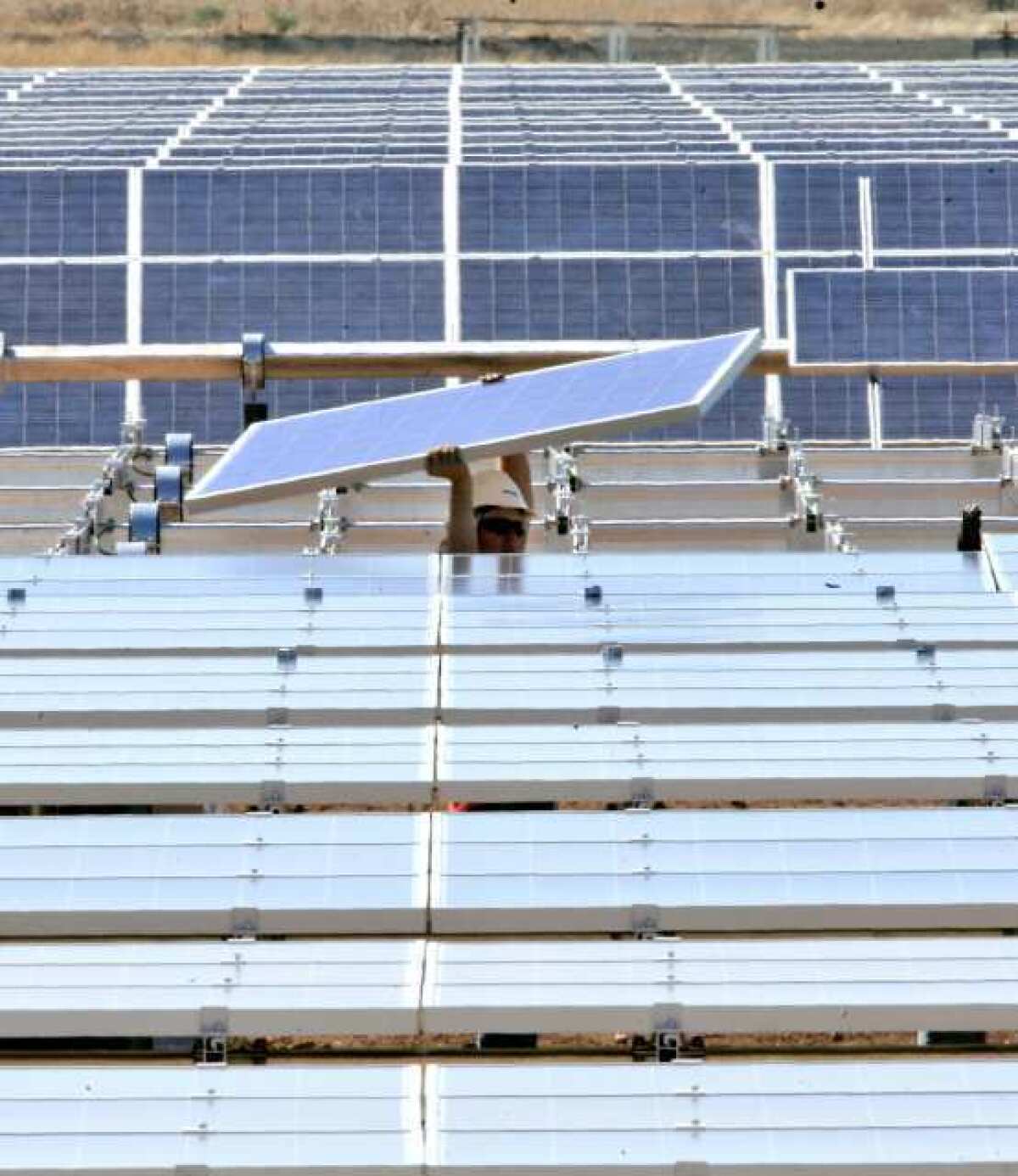California regulators pushing for electricity storage

- Share via
SACRAMENTO -- California’s electric utilities and other power sellers better hope that scientists and engineers come up with a surefire way to bottle lightning.
That’s a dramatic way of describing the more prosaic goal of finding a way to store large amounts of electricity, something that, up until now, did not seem practicable.
On Thursday, the state Public Utilities Commission voted to create a formal “energy storage target” of 1,325 megawatts -- equivalent to the output of almost three modern, natural gas-fired power plants. The goal applies to three investor-owned utilities, including Southern California Edison Co.
The storage systems -- holding enough electricity to power about 1 million homes -- should be installed by 2024, the PUC said.
“California is establishing the model to transform how we use energy. This decision will help achieve a more efficient, affordable and cleaner electricity system,” Assemblywoman Nancy Skinner (D-Berkeley) said. She’s the author of a 2010 law that directed the PUC to set the new storage standards.
Utilities and consumer advocates generally support the storage goals but urge the commission to be flexible about how they are used. “Aggressive procurement will come at a high cost to California ratepayers...” Edison said in a July filing with the PUC. “The procurement of over 1,300 MW of energy storage resources by 2020 could cost billions of dollars with uncertain net benefits for customers.”
Storage is needed to get the most of a California law that requires those same utilities to get a third of their power from renewable resources by 2020. Storage is needed to level out peaks in production caused by the fact that solar power works only when the sun is shining and wind power only when the wind is blowing.
For now, large-scale electricity storage has been strictly in the experimental stage, with prototypes being developed for giant batteries, flywheel devices, molten salt and pumping water to higher elevations so it can run turbines when it plunges back down.
The option of being able to “save” electricity represents a revolutionary way to make California’s transmission grid more reliable and to reduce greenhouse gas emissions that contribute to global warming, PUC Commissioner Mike Florio said. It also would reduce the chance of blackouts or rolling brownouts as the state tries to compensate for the loss of the San Onofre Nuclear Generating Station near San Clemente and the retirement of older power plants around the state.
Environmentalists praised the commission’s unanimous decision, calling it groundbreaking.
“Fossil fuels like natural gas are a dead end for the people of California, the power companies and for the entire planet,” Evan Gillespie of the Sierra Club said Thursday. “Today’s decision will spark new ideas and storage methods that can move us out of a destructive energy system into a safe, healthy and efficient system of renewable energy.”
ALSO:
California’s alternative energy program under scrutiny
Gov. Brown OKs overhaul of electricity rates
Replacing power from San Onofre will be a challenge
More to Read
Inside the business of entertainment
The Wide Shot brings you news, analysis and insights on everything from streaming wars to production — and what it all means for the future.
You may occasionally receive promotional content from the Los Angeles Times.











